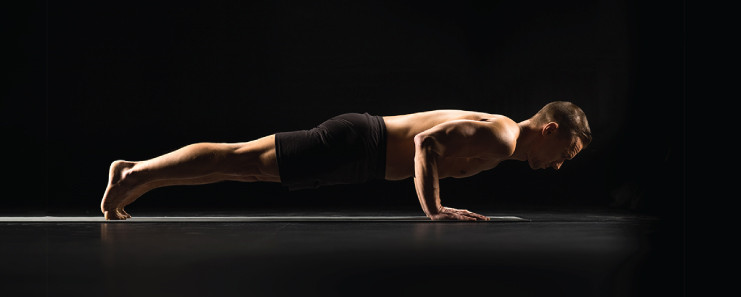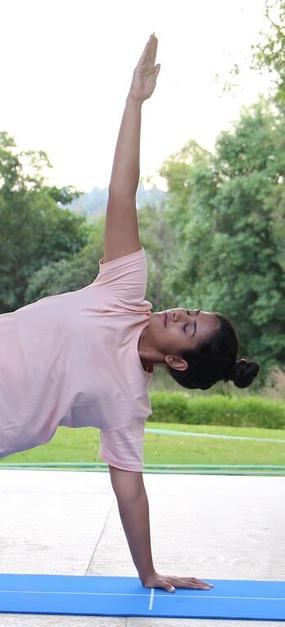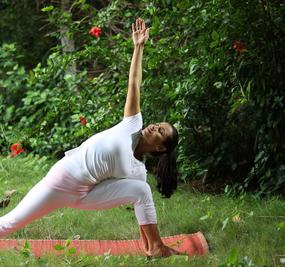Chatur means four; anga means limbs; Danda means staff (here, it refers to the spine of the body); asana means pose.
It is pronounced as cha-thur-anga Dhan-daa-sana.
This yoga pose is frequently practiced as part of the Surya Namaskar (Sun Salutation) pose.
How to do the Chaturanga Dandasana
- Sit in vajrasana.
- Walk your hands forward and come in Dandasana (plank pose) with your hands under your shoulders.
- Straighten your legs, till they are a few inches above the ground and parallel to it, with your toes turned inwards.
- On exhalation, bend your elbows until your shoulders are at the same height as your elbows.
- Exhale. Come up to plank pose. Exhale.
- Sit in Vajrasana.
Chaturanga Dandasana for beginners

Start with a shorter time frame and gradually increase it. You can hold this pose for 10 seconds at first, and then for a little longer each time depending on your comfort.
Benefits of Chaturanga Dandasana
- This asana strengthens the wrists, arms, and shoulders.
- It also helps straighten the spine, and strengthen the back and abdominal muscles.
- It helps keep the body aligned, maintaining core stability.
- It helps increase stamina. Sportspersons do the plank pose as part of cooling down exercises after playing.
This pose is also a follow-up pose after the adho mukha svanasana (downward-facing dog pose).
Contraindications of the Chaturanga Dandasana
Avoid practicing this asana if you have high blood pressure, headache, back, shoulder or hand injury, or are in the latter stages of pregnancy.
Yoga practice helps develop the body and mind, bringing a lot of health benefits; yet, it is not a substitute for medicine. It is important to learn and practice yoga postures under the supervision of a trained Sri Sri Yoga teacher. In case of any medical condition, practice yoga postures after consulting a doctor and a Sri Sri Yoga teacher. Find a Sri Sri Yoga program at an Art of Living Center near you.
Written with inputs from Meena Waghray, Faculty, Art of Living
















